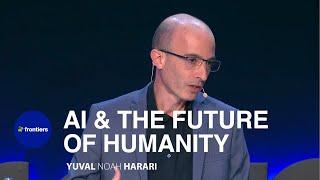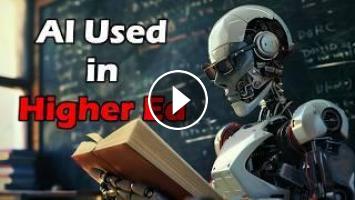Summary
In this conversation, David Shapiro interviews Jessica Parker, a builder in the AI space and education, about the misconceptions around generative AI in education. They discuss the lack of understanding of how large language models work and the misconception that they lead to plagiarism. Jessica explains how she is using generative AI tools to scale support for graduate students and improve the feedback and revision process. They also explore the concept of learner agency and how AI tools can shift the way students spend their time. The conversation highlights the value of AI in the higher education pipeline and the challenges of integrating AI in K-12 education. The conversation explores the purpose of education in the long run and the potential impact of AI on the education system. It discusses the importance of having a solid foundation before using AI tools and the potential for AI to enhance personalized learning. The conversation also touches on the dark side of AI in education, such as the consumer mindset of students and the potential for data exploitation. It concludes with a discussion on the different ways AI can be deployed to serve parents, students, and administrators.
Takeaways
Misconceptions around generative AI in education include a lack of understanding of how large language models work and the misconception that they lead to plagiarism.
Generative AI tools can be used to scale support for graduate students by providing feedback and assistance in the writing and revision process.
AI tools can shift the way students spend their time by offloading low-resource tasks and allowing them to focus on higher-order tasks.
The integration of AI in education should consider the learning outcomes and the level of expertise of the students.
AI tools are more easily integrated at the higher education level, while the integration in K-12 education poses more challenges. Having a solid foundation is important before using AI tools in education.
AI has the potential to enhance personalized learning and address the two sigma problem in education.
The consumer mindset of students and the potential for data exploitation are concerns in the use of AI in education.
Education should focus on critical thinking, problem solving, and learning how to learn.
AI can be deployed to serve parents, students, and administrators in various ways.
Chapters
00:00 Introduction and Misconceptions
02:04 Building Generative AI Tools for Education
06:01 Measuring Success and Monetizing Improvement
09:17 The Value of Feedback and Overcoming Obstacles
13:14 The Role of Education Theory and AI
18:18 AI Tools for Literature Review and Evidence-Based Decisions
21:27 Integrating AI in Higher Education
24:51 The Role of Expertise in Using AI in Education
27:47 The Dark Side of AI in Education
31:56 Focusing on Critical Thinking and Problem Solving
41:30 Deploying AI to Serve Parents, Students, and Administrators
In this conversation, David Shapiro interviews Jessica Parker, a builder in the AI space and education, about the misconceptions around generative AI in education. They discuss the lack of understanding of how large language models work and the misconception that they lead to plagiarism. Jessica explains how she is using generative AI tools to scale support for graduate students and improve the feedback and revision process. They also explore the concept of learner agency and how AI tools can shift the way students spend their time. The conversation highlights the value of AI in the higher education pipeline and the challenges of integrating AI in K-12 education. The conversation explores the purpose of education in the long run and the potential impact of AI on the education system. It discusses the importance of having a solid foundation before using AI tools and the potential for AI to enhance personalized learning. The conversation also touches on the dark side of AI in education, such as the consumer mindset of students and the potential for data exploitation. It concludes with a discussion on the different ways AI can be deployed to serve parents, students, and administrators.
Takeaways
Misconceptions around generative AI in education include a lack of understanding of how large language models work and the misconception that they lead to plagiarism.
Generative AI tools can be used to scale support for graduate students by providing feedback and assistance in the writing and revision process.
AI tools can shift the way students spend their time by offloading low-resource tasks and allowing them to focus on higher-order tasks.
The integration of AI in education should consider the learning outcomes and the level of expertise of the students.
AI tools are more easily integrated at the higher education level, while the integration in K-12 education poses more challenges. Having a solid foundation is important before using AI tools in education.
AI has the potential to enhance personalized learning and address the two sigma problem in education.
The consumer mindset of students and the potential for data exploitation are concerns in the use of AI in education.
Education should focus on critical thinking, problem solving, and learning how to learn.
AI can be deployed to serve parents, students, and administrators in various ways.
Chapters
00:00 Introduction and Misconceptions
02:04 Building Generative AI Tools for Education
06:01 Measuring Success and Monetizing Improvement
09:17 The Value of Feedback and Overcoming Obstacles
13:14 The Role of Education Theory and AI
18:18 AI Tools for Literature Review and Evidence-Based Decisions
21:27 Integrating AI in Higher Education
24:51 The Role of Expertise in Using AI in Education
27:47 The Dark Side of AI in Education
31:56 Focusing on Critical Thinking and Problem Solving
41:30 Deploying AI to Serve Parents, Students, and Administrators
- Category
- Artificial Intelligence
- Tags
- ai, artificial intelligence, python












Comments